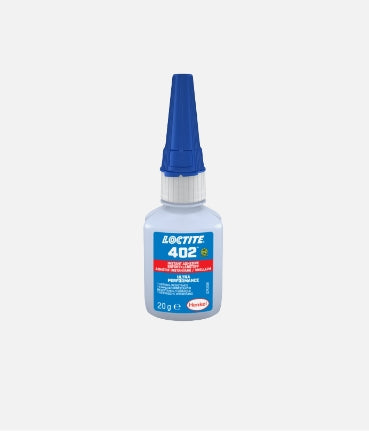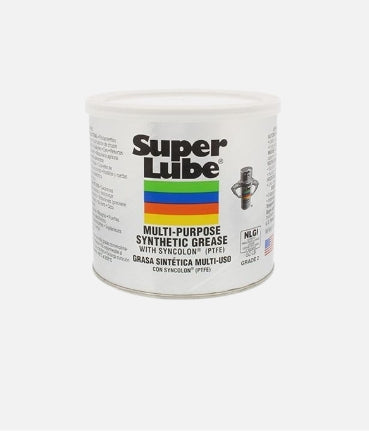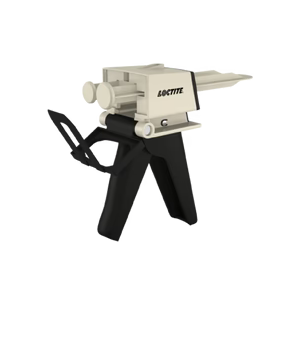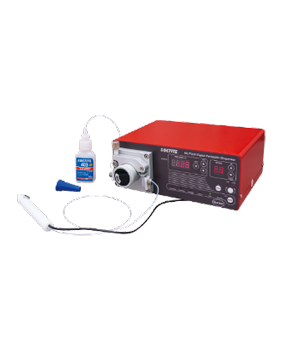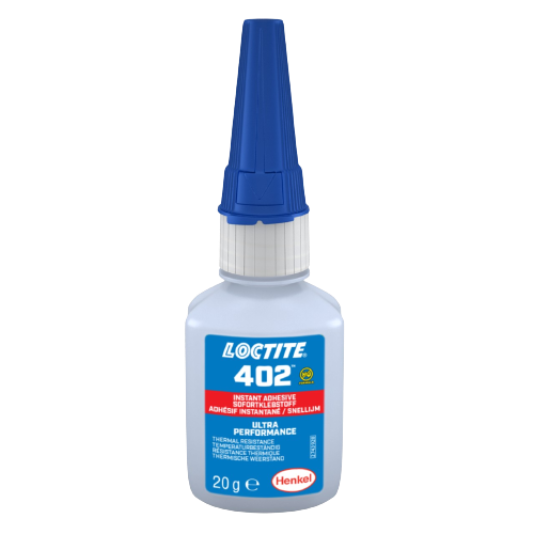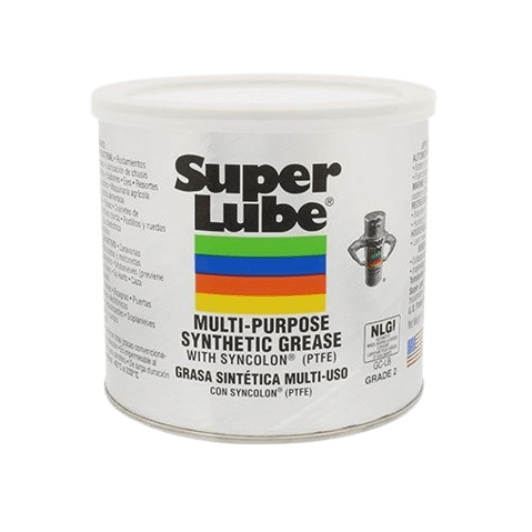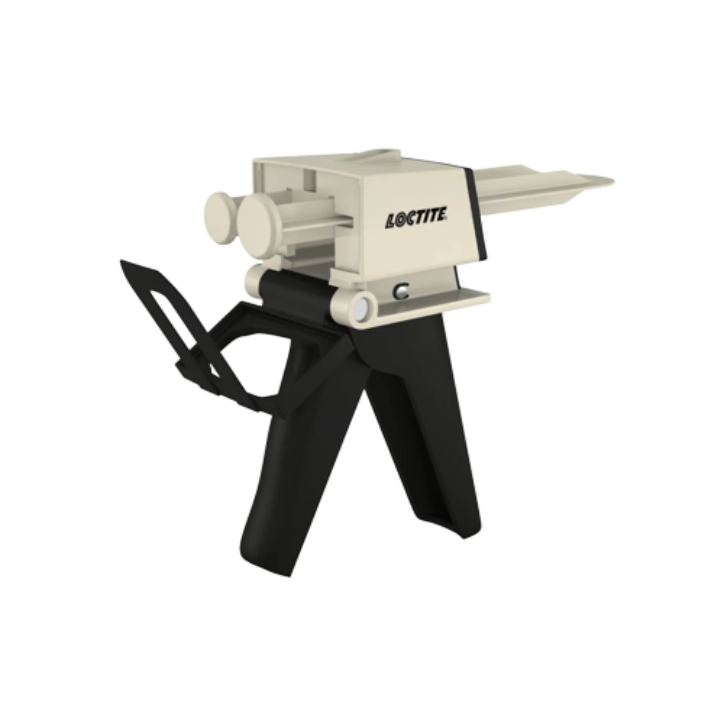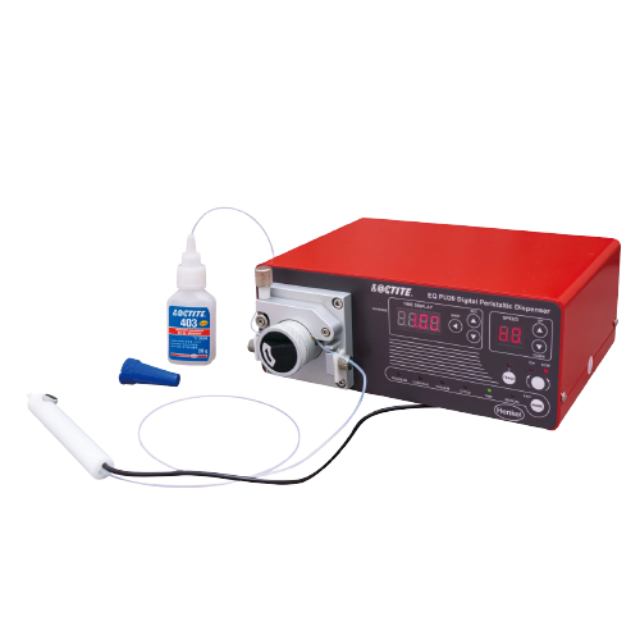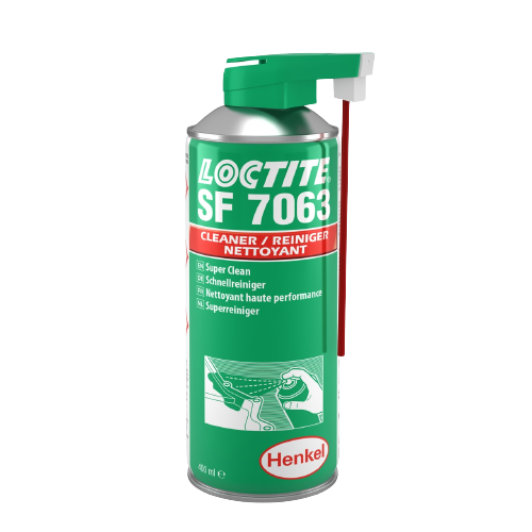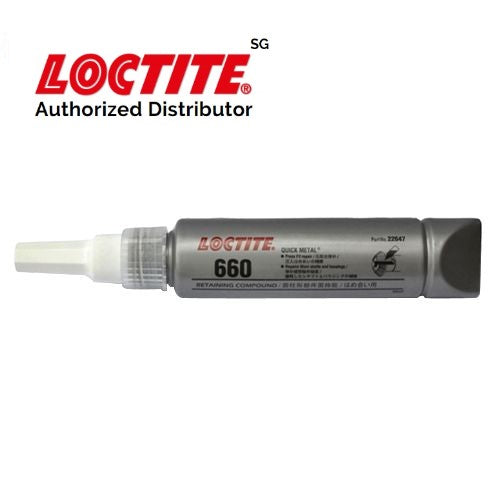
Loctite 660 Retaining Compound
Description
LOCTITE®
660™ is designed for the bonding of cylindrical
fitting parts, particularly where bond gaps can approach 0.50
mm (0.02 in.). The product cures when confined in the absence
of air between close fitting metal surfaces and prevents
loosening and leakage from shock and vibration. This product
possesses excellent gap cure characteristics. Typical
applications include restoring correct fits on worn shafts, spun
bearings, and damaged keyways.
Registered to NSF Category P1 for use as a sealant where
there is no possibilty of food contact in and around food
processing areas. Note: This is a regional approval. Please
contact your local Technical Service Center for more
information and clarification.
The rate of cure will depend on the substrate used. The graph
below shows the shear strength developed with time on steel
pins and collars compared to different materials and tested
according to ISO 10123.
The rate of cure will depend on the bondline gap. The following
graph shows shear strength developed with time on steel pins
and collars at different controlled gaps and tested according to
ISO 10123.
The rate of cure will depend on the temperature. The graph
below shows the shear strength developed with time at
different temperatures on steel pins and collars and tested
according to ISO 10123.
Where cure speed is unacceptably long, or large gaps are
present, applying activator to the surface will improve cure
speed. The graph below shows the shear strength developed
with time on zinc dichromate steel pins and collars using
Activator 7471™ and 7649™ and tested according to ISO
10123.
This product is not recommended for use in pure oxygen
and/or oxygen rich systems and should not be selected as
a sealant for chlorine or other strong oxidizing materials.
For safe handling information on this product, consult the
Safety Data Sheet (SDS).
Where aqueous washing systems are used to clean the
surfaces before bonding, it is important to check for
compatibility of the washing solution with the adhesive. In
some cases these aqueous washes can affect the cure and
performance of the adhesive.
This product is not normally recommended for use on plastics
(particularly thermoplastic materials where stress cracking of
the plastic could result). Users are recommended to confirm
compatibility of the product with such substrates.
LMS dated September-1, 1995. Test reports for each batch are
available for the indicated properties. LMS test reports include
selected QC test parameters considered appropriate to specifications
for customer use. Additionally, comprehensive controls are in place to
assure product quality and consistency. Special customer
specification requirements may be coordinated through Henkel Quality.
Store product in the unopened container in a dry location.
Storage information may be indicated on the product container
labeling.
Optimal Storage: 8 °C to 21 °C. Storage below 8 °C or
greater than 28 °C can adversely affect product properties.
Material removed from containers may be contaminated during
use. Do not return product to the original container. Henkel
Corporation cannot assume responsibility for product which
has been contaminated or stored under conditions other than
those previously indicated. If additional information is required,
please contact your local Technical Service Center or
Customer Service Representative.
Read More
Read Less
Loctite 660 Quick Metal Retaining Compound 50ml
- Shear Strength, Steel : 3335 psi
- Temperature : -65 - 300 °F
- Viscosity : 250000 - 1500000
- Color : Silver
- Curing Type : Anaerobic
- Application : Retaining
LOCTITE 660 is designed for the bonding of cylindrical fitting parts, particularly where bond gaps occurs without the need for remachining. The product cures when confined in the absence of air between close-fitting metal surfaces and prevents loosening and leakage due to shock and vibration. LOCTITE 660 exhibits excellent gap cure characteristics and is also suitable for retaining shims.
- Ideal for repairing worn parts without remachining
- Enables re-use of worn bearing seats, keys, splines or tapers
- Suitable for retaining shims
- P1 NSF Reg. No.: 123704
LOCTITE®
660™ is designed for the bonding of cylindrical
fitting parts, particularly where bond gaps can approach 0.50
mm (0.02 in.). The product cures when confined in the absence
of air between close fitting metal surfaces and prevents
loosening and leakage from shock and vibration. This product
possesses excellent gap cure characteristics. Typical
applications include restoring correct fits on worn shafts, spun
bearings, and damaged keyways.
NSF International
Registered to NSF Category P1 for use as a sealant where
there is no possibilty of food contact in and around food
processing areas. Note: This is a regional approval. Please
contact your local Technical Service Center for more
information and clarification.
TYPICAL CURING PERFORMANCE
Cure Speed vs. Substrate
The rate of cure will depend on the substrate used. The graph
below shows the shear strength developed with time on steel
pins and collars compared to different materials and tested
according to ISO 10123.
Cure Speed vs. Bond Gap
The rate of cure will depend on the bondline gap. The following
graph shows shear strength developed with time on steel pins
and collars at different controlled gaps and tested according to
ISO 10123.
Cure Speed vs. Temperature
The rate of cure will depend on the temperature. The graph
below shows the shear strength developed with time at
different temperatures on steel pins and collars and tested
according to ISO 10123.
Cure Speed vs. Activator
Where cure speed is unacceptably long, or large gaps are
present, applying activator to the surface will improve cure
speed. The graph below shows the shear strength developed
with time on zinc dichromate steel pins and collars using
Activator 7471™ and 7649™ and tested according to ISO
10123.
GENERAL INFORMATION
This product is not recommended for use in pure oxygen
and/or oxygen rich systems and should not be selected as
a sealant for chlorine or other strong oxidizing materials.
For safe handling information on this product, consult the
Safety Data Sheet (SDS).
Where aqueous washing systems are used to clean the
surfaces before bonding, it is important to check for
compatibility of the washing solution with the adhesive. In
some cases these aqueous washes can affect the cure and
performance of the adhesive.
This product is not normally recommended for use on plastics
(particularly thermoplastic materials where stress cracking of
the plastic could result). Users are recommended to confirm
compatibility of the product with such substrates.
Directions for use
For Assembly
- For best results, clean all surfaces (external and internal) with a
LOCTITE®
cleaning solvent and allow to dry. - If the material is an inactive metal or the cure speed is too slow,
spray with Activator 7471™ or 7649™ and allow to dry. - For Slip Fitted Assemblies, apply adhesive around the leading
edge of the pin and the inside of the collar and use a rotating
motion during assembly to ensure good coverage. - For Press Fitted Assemblies, apply adhesive thoroughly to both
bond surfaces and assemble at high press on rates. - For Shrink Fitted Assemblies the adhesive should be coated
onto the pin, the collar should then be heated to create sufficient
clearance for free assembly. - Parts should not be disturbed until sufficient handling strength is
achieved.
For Disassembly
- Apply localized heat to the assembly to approximately 250
°C. Disassemble while hot.
For Cleanup
- Cured product can be removed with a combination of soaking in
a Loctite solvent and mechanical abrasion such as a wire brush
Loctite Material Specification
LMS dated September-1, 1995. Test reports for each batch are
available for the indicated properties. LMS test reports include
selected QC test parameters considered appropriate to specifications
for customer use. Additionally, comprehensive controls are in place to
assure product quality and consistency. Special customer
specification requirements may be coordinated through Henkel Quality.
Storage
Store product in the unopened container in a dry location.
Storage information may be indicated on the product container
labeling.
Optimal Storage: 8 °C to 21 °C. Storage below 8 °C or
greater than 28 °C can adversely affect product properties.
Material removed from containers may be contaminated during
use. Do not return product to the original container. Henkel
Corporation cannot assume responsibility for product which
has been contaminated or stored under conditions other than
those previously indicated. If additional information is required,
please contact your local Technical Service Center or
Customer Service Representative.

Loctite 660 Retaining Compound
Sale price$0.00
Regular price (/)
Products and Adhesive / Sealant
Categories
Loctite
Products Brand

